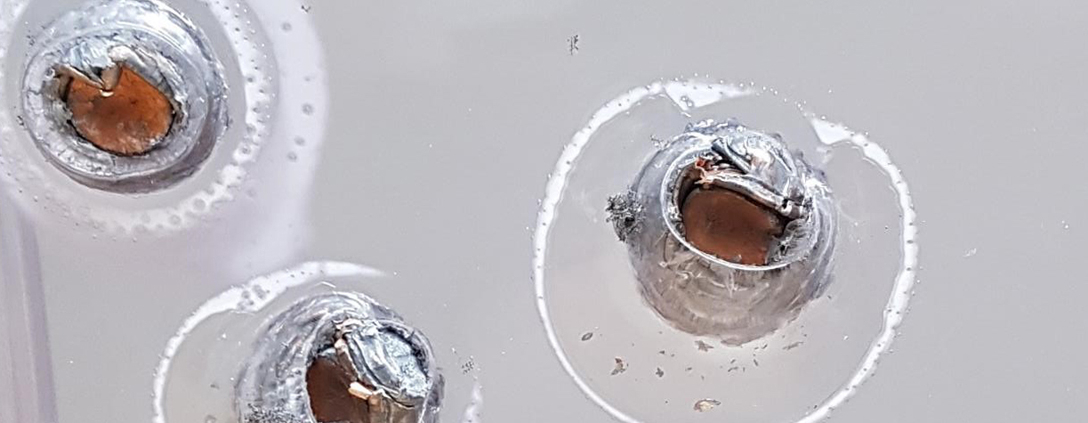Bulletproof vs. Bullet Resistant: What Is The Difference?
Many situations in today’s world call for stringent safety considerations. From security windows in crime-ridden areas to fortified entrances in schools, banks, police stations and government buildings, the scale of security to keep both workers and assets safe is escalating. More and more commonly, these security solutions come in the form of bulletproof and bullet resistant products.
For those tasked with procuring these products, it can be confusing to know what the difference between bulletproof and bullet resistant really is and how to choose the right features to meet their specific needs. To help, below is a look into each term and how they differ from one another.
Breaking Down Bulletproof vs. Bullet Resistant
Much of the confusion comes down to the fact that the term “bulletproof” is a misnomer. While items of this category do provide varying degrees of protection, nothing actually exists which will remain indestructible regardless of the weapon, amount of ammo or force used as the term implies. Instead, it offers a certain level of resistance to attacks. The word bulletproof is also widely used, although technically it’s also inaccurate. Bulletproof implies no bullet can penetrate under any circumstances. There are no such thing as bulletproof windows. If you shoot any security glazing in the same spot enough times with the right firearm, it will fail.
For instance, some bulletproof window glass is reinforced to the point it can withstand a shot from a high-powered rifle as well as most shotguns and handguns. That same glass, however, will eventually be severely damaged and even penetrable when fired upon repeatedly. Although effective in times of need, the window isn’t capable of completely withstanding a drawn-out attack. What it does do, is provide protection long enough for those bystanders located on the secure side of the bullet resistant glass to get to safety.
What does it take for an item to be deemed “bulletproof”? Generally, many in the industry deem one foot of solid concrete or six inches of lead sheathing to be bulletproof. Therefore, it simply isn’t possible for items like bulletproof vests to be actually “bulletproof” but rather bullet resistant.
Essentially, the extent of protection of bulletproof products comes down to the type and thickness of the framing, glazing or wall armor used. The same can be said for bullet resistant. This is an important distinction, especially in terms of bullet resistant glass as it really isn’t “glass” at all.
These types of specialized systems and wall armor absorb and diffuse the energy of a bullet’s impact to resist penetration, to a limit. The keyword is resist. “Bullet-resistant” or “ballistic-resistant” (BR) are more accurate descriptions for the type of protection designed to absorb the impact of a ballistic projectiles.
What Is Bullet Resistant Glass?
A normal sheet of glass in a window or door may shatter relatively easy. As such, to be considered bullet resistant and provide adequate defense, the glass must be much stronger and highly durable. On the market, there are three such types of bullet resistant “glass” with only one of the three incorporating regular glass. Each is made with different materials and often feature layering in the design to provide the necessary thickness and other bullet resistant properties.
What are these three types? The first is laminated polycarbonate. Soft and versatile, this plastic is easy to work with and is lightweight. It is also extremely strong, making it a great alternative to glass. It’s used to create a durable, bullet resistant surface incorporating layers of other materials such as polyurethane. When installed in an intentionally symmetrical manner, a thick polycarbonate design can effectively catch a projectile fired at it by absorbing the energy. This prevents it from exiting through the other side or from being repelled.
Next is glass-clad polycarbonate. Much like the preceding type, this bullet resistant glass uses a combination of materials in a specific arrangement of layers to create a sturdy end product. The result is typically a piece of polycarbonate positioned between two layers of regular glass. These layers are often covered in specially crafted films to better prevent shattering and spalling. Due to the adaptability of its design, this type of bullet resistant glass can be remarkably more durable than the other two options.
Lastly, there is acrylic. Mostly used indoors, this type of thick plastic is desirable as it highly resembles glass and is bullet resistant when it measures more than an inch thick. Other benefits include its impact-resistant nature, durability and that it is lightweight when compared to glass. Acrylic can also be polished which is why you will see it commonly used for baffle windows.
Finding the Right Level of Protection
As you continue the search for the most suitable product, keep in mind the points brought up here regarding the terms bullet resistant vs. bulletproof. Furthermore, before completing your upcoming purchase, be sure to go over the materials used, thickness and other design elements with the manufacturer. Doing so can help ensure you get the level of protection you need to keep your property and personnel safe from harm.
U.S. Bullet Proofing is a pioneer in the design and supply of aluminum window and door systems that provide high-level protection from ballistics, blast, storm impact and forced entry. Our job is Protecting People and Property®, and we take that responsibility very seriously as evident in quality of products we provide and the scale and the iconic type of projects that have incorpoated our solutions. Contact one of our sales representatives today to learn more about how we can help you with your next security project.


